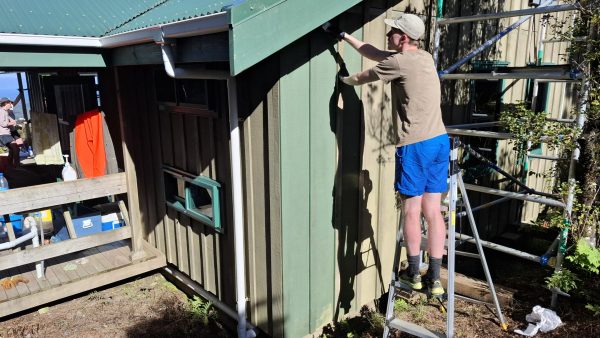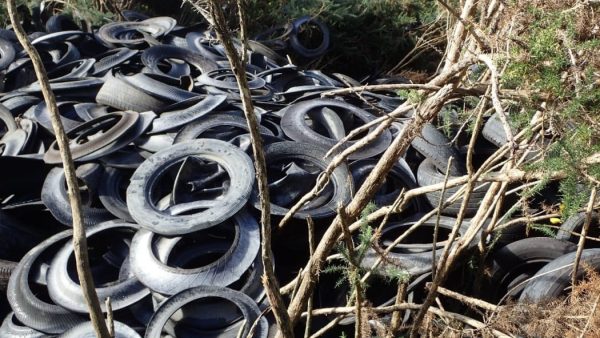Suction dredging is about to begin in a battle against the highly invasive caulerpa seaweed taking hold at Aotea, Great Barrier Island.
This bright-green invasive caulerpa seaweed is smothering the delicate marine ecosystem on Great Barrier Island. Photo / Glenn Edney
Suction dredging is about to begin in a battle against the highly invasive caulerpa seaweed taking hold at Aotea, Great Barrier Island.
Caulerpa – capable of growing up to 3 centimetres a day – was discovered on the island about two years ago and can be devastating for biodiversity and fish numbers.
University of Otago director of the Aquaculture and Fisheries Programme Professor Chris Hepburn told Morning Report “suction dredging … pumps sand up out of the sea and up to the surface. So you have a little float with the engine, it’s a bit like a gold dredge, and you can suck things up out of the water and it’s pumped out up onto the surface.
“(The caulerpa) will still be alive, but it’s placed into bags that don’t allow any fragments to leave and it’s a really quick way of of removing a lot of biomass when you are diving.”
There could be “many tonnes” of caulerpa to remove.
Suction dredges could be quite efficient, but it was a “big job”, Hepburn said.
“You’re underwater and obviously you can’t breathe underwater, so there’s a lot of challenges with this work.”
The suction dredging – a trial – would focus on study plots that would be revisited to see if the caulerpa returned, Hepburn said.
“Really, it probably will. Caulerpa fragments a lot and spreads quite quickly. So it’s not a one off thing – you need to return a number of times before you actually get control of the species.”
Whether the process would get rid of caulerpa or slow its spread was hard to know due to the large scale of the project, he said.
“It seems like a really big job at the moment, but generally quite often in the marine environment, we think things are a lot harder than they actually are. You can actually achieve control.
“Eradication could be challenging, but the big issue we face in the main environment really is we need the tools to be able to control an invasive species when it arrives, so this research is really, really important in developing a toolkit for (what) we actually do when invasive species arrives – and this species is could be really damaging for our marine ecosystem, so it’s really important that we do this sort of work.”
Regarding the length of time between caulerpa arriving and the trial, Hepburn said a problem with new marine invasive species was the difficulty of determining the impact they would have and what should be done.
“It’s quite easy to say ‘Oh the horse has bolted’ or it’s too difficult. But really we need to be making really quick decisions and responding quickly, otherwise we end up in situations where we have a much larger area to deal with and things start sounding a bit difficult.
“I’m not saying it’s easy, it’s very challenging, but it’s really important if we’re actually gonna keep some of these invasive species at bay.”
People on the island had told him the impact of caulerpa was “quite significant”, Hepburn said.
“They’ve formed these monospecific or one species stands of this caulerpa species, and it looks almost like astroturf across the soft sediment habitats. So really profoundly modifies important marine ecosystems like scallop beds and things like that.”
The dredging itself was not without harm, either.
“It will suck up all the sand so it will damage the environment. Soft sediment habitats are quite dynamic, so you’ll have wave events, so it will be damaging for the areas where caulerpa is. But really, you need to do something around the species
“There could be effects like sediment being released into the water column so that could have some impact. But we need to act and also have these methods available if – when -caulerpa moves into other areas and other more sensitive places, we need to be able to act and use these methods to control the species.”
-RNZ






